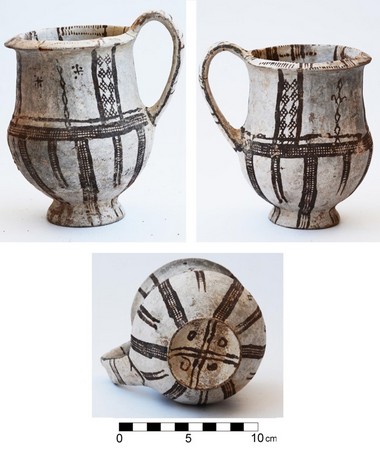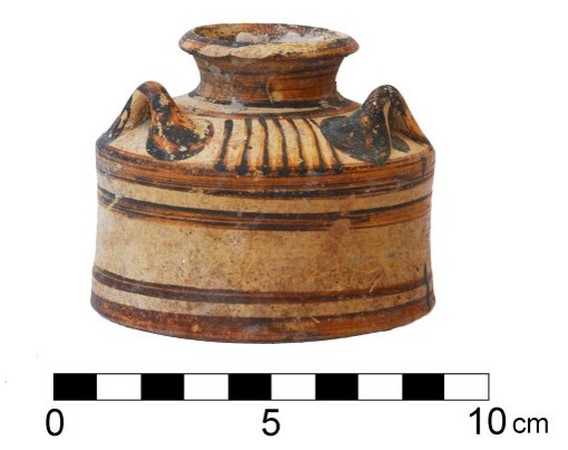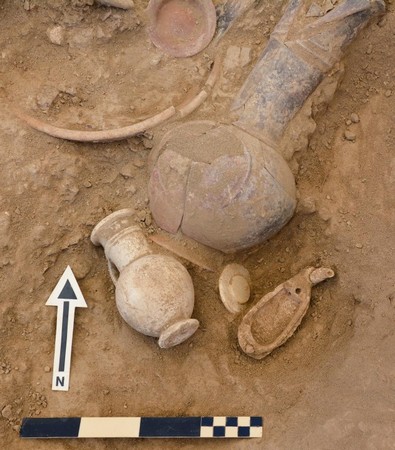Press Releases

10-06-2022 14:24
Excavations at Dromolaxia-Vyzakia (Hala Sultan Tekke)
The Department of Antiquities, of the Ministry of Transport, Communications and Works, announces that in May and June 2022 a team headed by Professor Peter M. Fischer from the University of Gothenburg, Sweden, carried out excavations at the Late Cypriot harbour city of Dromolaxia-Vyzakia (Hala Sultan Tekke). This large Late Bronze Age city, which flourished between 1630 and 1150 BC, is situated along the shores of the Larnaka Salt Lake near the mosque of Hala Sultan Tekke and not far away from the Larnaka International Airport. Parallel with the excavations, another group of the Swedish team, supervised by Dr Teresa Bürge processed the finds from previous excavations kept at the storerooms of the Archaeological Museum of the Larnaka District. The Swedish team was assisted by Professors Kirsi Lorentz and Sorin Hermon and PhD students from the Cyprus Institute. The teams of the Cyprus Institute provided expertise for the excavation and recording of the human remains, and 2D and 3D presentations of objects and find contexts in addition to material analyses.
Excavations concentrated on Area A, the city’s cemetery. Two exposed tombs, one of them partly affected by farming, were secured and competently excavated. The position of the first tomb (Tomb TT) was indicated during a magnetometer survey carried by the expedition in 2017 after which the area was fenced. Shattered pottery and bones revealed the exact position of the second tomb (Tomb UU), which likewise is visible on the magnetometer map. Subsequently, the area surrounding Tomb UU was also fenced by the expedition. Both tombs contained material from the outgoing 15th and the 14th centuries BC, which chronologically corresponds to the Late Cypriot IIA-B period, the Late Helladic IIIA1-2 and the famous Egyptian 18th Dynasty.
Both tombs, obviously family tombs with numerous interred individuals, were cut into clay-rich soil. The study of the skeletal remains is not yet finalized. Therefore, the estimation of the number of individuals, their gender and age at death have to await further investigations. It is, however, our impression that the tombs belonged to two rich families, judging by the nature of the finds. New-born, infants and young and “old” adults were found associated with numerous burial gifts. “Old” should be understood as individuals rarely exceeding 40 years of age, i.e., the average lifespan was quite low in this period.
Dominating among tomb gifts is pottery, mainly ceramic vessels of high quality which were produced on Cyprus but also numerous imports. The most common imports arrived from the Aegean, the Mycenaean and Minoan cultural spheres. There are also imports from Anatolia, the Levant and Egypt. From the latter arrived exquisite vessels of alabaster and scarabs. It is worthwhile noticing, that one of the alabaster vessels of Egyptian origin imitates Cypriot pottery, the so-called Base-ring I ware, which became very popular in Egypt during the reign of pharaoh Thutmosis III in the 15th century BC. Some of the scarabs have inscription with hieroglyphs, which will be deciphered within short. There are also several objects of ivory which immediately were submitted to the conservators of the Department of Antiquities, in order to preserve and conserve this extremely brittle material.
In summary, the nature of the finds points to a wealthy Cypriot society which had established contacts with cultures all over the Mediterranean and beyond. The wealth of the inhabitants of Dromolaxia-Vyzakia was based on the production and export of copper, and far-reaching trade. This is substantiated by tons of copper slag and ore which was refined in intra-urban workshops.
Figures:

Fig. 1: Two Cypriot produced White Slip II tankards.

Fig. 2: Mycenaean imported alabastron.

Fig. 3: Base-ring I jug; below an Egyptian juglet with lid of alabaster imitating Base-ring; and duck-shaped vessel of ivory.
(NG/ECHR)
Relevant Press Releases



